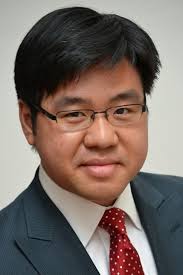‘Bamboo ceiling’ stopping Asian Australians reaching their full potential?
 A ‘bamboo ceiling’ is preventing Australians with Asian cultural backgrounds from achieving the highest positions of leadership in many public and private organisations, according to Race Discrimination Commissioner Tim Soutphommasane.
A ‘bamboo ceiling’ is preventing Australians with Asian cultural backgrounds from achieving the highest positions of leadership in many public and private organisations, according to Race Discrimination Commissioner Tim Soutphommasane.
In a recent speech to the Asian Australian Lawyers Association Mr Soutphommasane said that recognising that such barriers exist can be the most difficult part of starting a conversation about diversity and unconscious bias.
“You will have all heard the following many times before: we live in an egalitarian, meritocratic society that is blind to cultural difference,” he said.
“Some will respond by saying that figures such as Victor Chang or Bing Lee demonstrate that Asian Australians can succeed as professionals or entrepreneurs without major problems. Other responses are more dismissive: if Asian Australians aren’t in leadership positions, it’s because they may not aspire to them; they may be more comfortable remaining in the background.
“However one explains things away, the facts are pretty clear. Nearly 50 per cent of our population were either born overseas or have a parent who was born overseas.
“While it is difficult to offer a precise figure, it is estimated that close to 10 per cent of the Australian population have Asian cultural origins or ancestry. But such diversity is far from proportionately represented when it comes to positions of leadership in both the public and private sectors.”
Dr Soutphommasane asked whether unconscious bias might help explain the pattern of representation for Asian Australians among our political and business leaders.
“Unconscious bias and stereotyping must play some part. This is because the poor level of Asian Australians in leadership positions appears to replicate a certain pattern that occurs more generally in Australian culture. It is a pattern of invisibility.
“Consider the disjuncture between the familiar presence of Asians in Australian society – particularly in our major cities and suburbs – and the exotic character they still assume in Australian media.
“Yes, it is true there are numerous Asian faces on our television screens these days. Yet for the most part they are confined to presenting programs about the culinary delights of modern Australian fusion food, or as plucky contestants in cooking shows such as Masterchef.
“We see few Asian faces reading the news, particularly on our commercial channels. We see few Asian faces intruding upon spheres that we may describe as the domains of mainstream Australia.”












